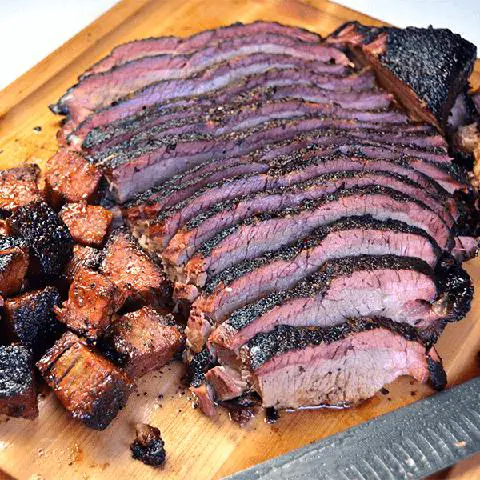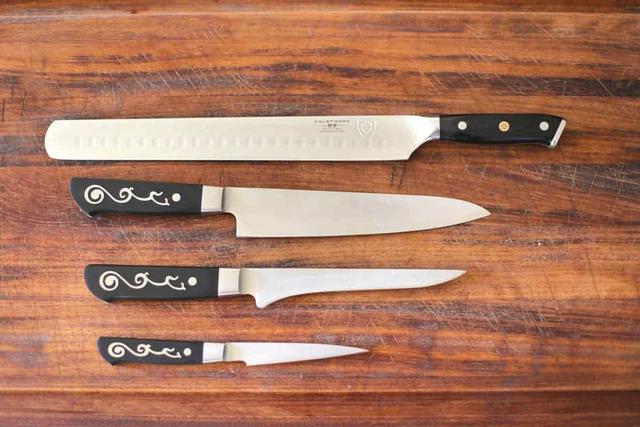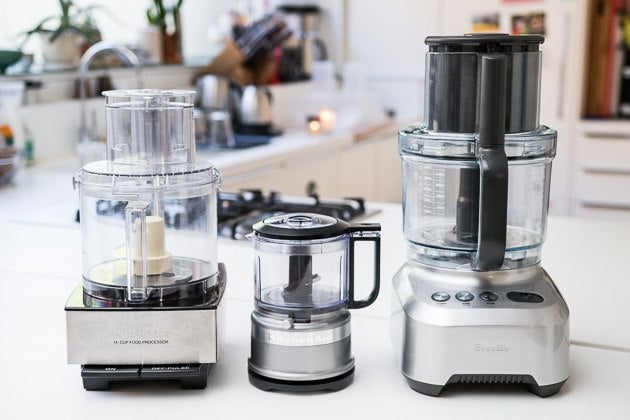
Cuisinart vs KitchenAid Food Processor: Unveiling Two Powerhouses in the Kitchen. Discover the ultimate showdown between Cuisinart and KitchenAid food processors, as we delve into their features, performance, and reliability. Find out which brand reigns supreme in this battle of culinary convenience, assisting you in making an informed decision for your kitchen needs.
Which is Better: Cuisinart vs Kitchenaid Food Processor
When comparing the Cuisinart and Kitchenaid food processors, it is difficult to determine which one is better as they both have their own unique features and strengths. Both brands offer a variety of sizes and models to choose from, allowing you to find the one that best fits your needs.
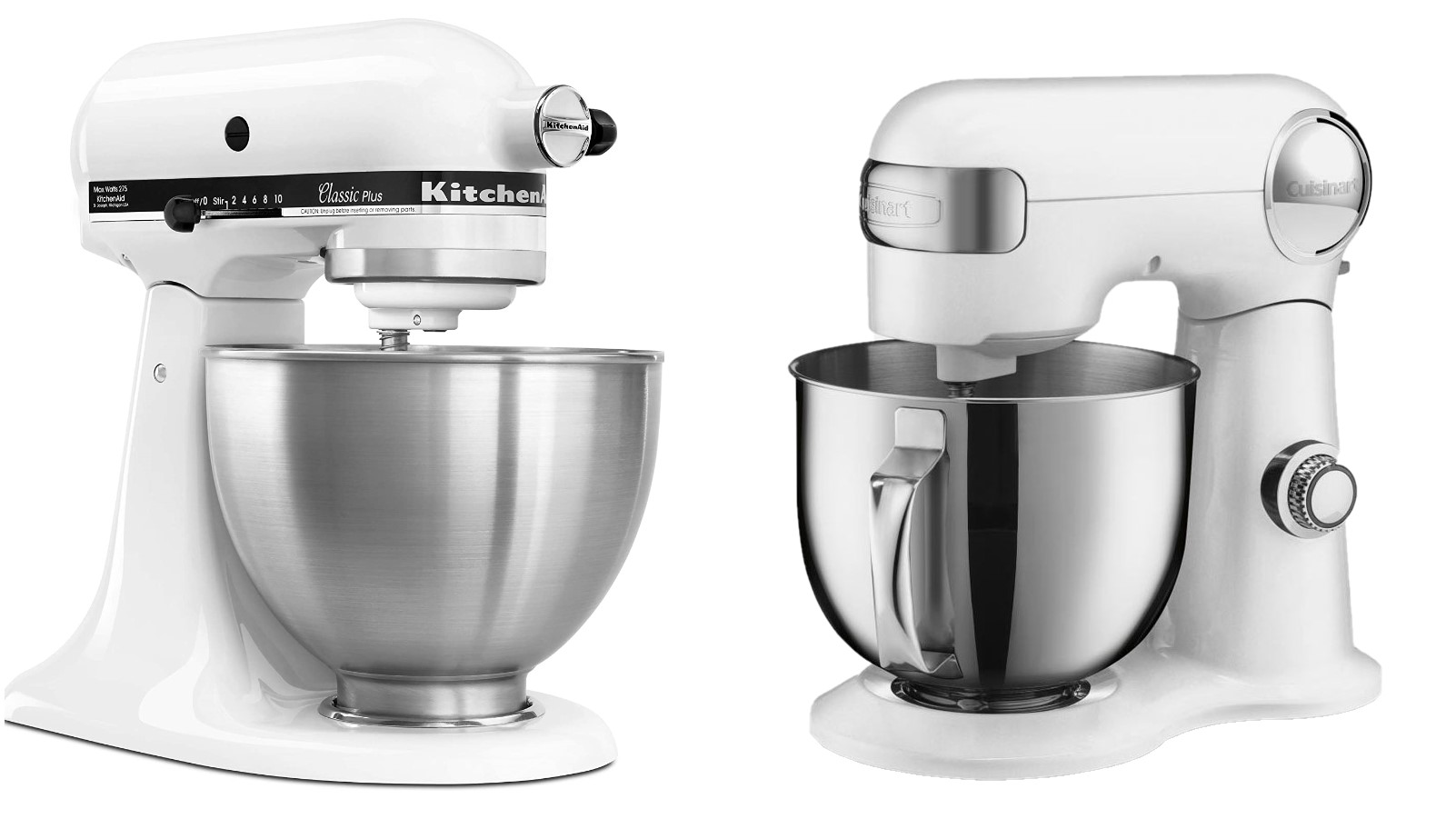
In terms of features, both food processors come with three chopping attachments – an S-shaped chopping blade, a versatile shredding disk, and a slicing disk. The Kitchenaid offers three speeds (low, high, and pulse) while the Cuisinart only has on and pulse options. However, the Cuisinart has a more powerful 600-watt motor compared to the Kitchenaid’s 300-watt motor.
In terms of build quality, both brands are known for their reliability and solid construction. The blades are made from high-grade stainless steel and are easy to sharpen. The Cuisinart is made from ABS plastic while the Kitchenaid is made from Polycarbonate plastic. Each material has its own advantages in terms of strength and flexibility.
The price point for both brands is similar, with both models costing around $100. However, they often go on special making them equal contenders for better value for money.
Cuisinart vs Kitchenaid Food Precessor Review
When comparing the Cuisinart and Kitchenaid food processors, it is clear that both brands offer high-quality products with excellent features. Both models come with three chopping attachments, including a stainless steel S-shaped chopping blade, a versatile shredding disk, and a slicing disk. However, there are some differences in terms of speed and motor power. The Kitchenaid has three speeds (low, high, and pulse) but only a 300-watt motor, while the Cuisinart has a heavy-duty 600-watt motor but lacks the additional speed options.
In terms of capacity, both brands offer various sizes ranging from 3-cup to 14-cup models. The most popular size is the 11-cup, which can handle most kitchen projects. The Cuisinart is slightly slimmer than the Kitchenaid, making it more suitable for small kitchens. Both models also feature dual-size feeding tubes for easy ingredient insertion.
When it comes to build quality, both brands use high-grade stainless steel blades that are resistant to rust and easy to sharpen. The Cuisinart model is made from ABS plastic, while the Kitchenaid is made from Polycarbonate Plastic. This difference in material affects their durability and flexibility.
What is a Cuisinart? / What is a Kitchenaid?
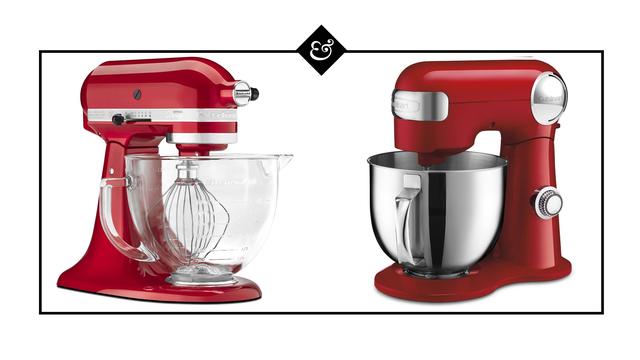
Cuisinart and Kitchenaid are both well-known kitchen appliance manufacturers that specialize in food processors. Cuisinart has been around for about 40 years and has established itself as a reliable and solid brand. They offer a wide range of food processors with different sizes and features to suit various needs. Their food processors are designed to make kitchen preparation easier by blending, mixing, stirring, chopping, and slicing ingredients effortlessly.
Kitchenaid, on the other hand, is the older sibling in this situation, celebrating its 100th anniversary this year. They have a long-standing reputation for producing high-quality kitchen appliances. Like Cuisinart, Kitchenaid offers a variety of food processors with different capacities and functionalities. Their food processors are designed to be versatile and durable, providing users with the ability to chop, mix, slice, and more.
Kitchenaid vs Cuisinart Food Processor Pros and Cons
Both Kitchenaid and Cuisinart food processors have their own set of pros and cons. Here are some key points to consider:
Kitchenaid Pros:
- Versatile with three chopping attachments
- Three speeds for more control
- Larger capacity options
- UltraTight Seal feature prevents spillage
- Relatively quiet operation
- Durable build quality with stainless steel blades
Kitchenaid Cons:
- Lower wattage motor compared to Cuisinart
- Slightly larger in size, may not fit well in small kitchens
- Shredder attachment may struggle with thick ingredients like cheese
- Shorter warranty period (one year)
Cuisinart Pros:
- Heavy-duty 600-watt motor for tougher tasks and dough mixing
- Slimmer design, fits well in small kitchens
- Better shredder attachment performance according to reviews
- Longer warranty period (three years)
Cuisinart Cons:
-
- Lacks UltraTight Seal feature, may overflow when filled to capacity
- Simpler controls with only on and pulse options
- Louder operation compared to Kitchenaid (though still relatively quiet)
>
- Made from ABS plastic which is less flexible than Polycarbonate used in Kitchenaid model
Overall, both brands offer high-quality food processors with similar features. The choice between Kitchenaid and Cuisinart ultimately depends on your specific needs and preferences.
Kitchenaid Food Processors
Kitchenaid food processors are known for their versatility and durability. They come with a range of features that make them suitable for various tasks in the kitchen. The S-shaped chopping blade made from stainless steel allows for coarse chopping and can also be used as a dough blade. The versatile shredding disk is great for making coleslaw, salads, and stir fry ingredients. The slicing disk is perfect for thin slicing of ingredients like potatoes to make potato chips.
The Kitchenaid food processors have three speeds – low, high, and pulse – which give you more control over your dishes. However, they have a 300-watt motor, which may not be ideal for heavy-duty chopping or mixing dough. In terms of capacity, Kitchenaid offers sizes ranging from 3 cups to 14 cups, with the 11-cup size being the most popular. The food processors also feature dual-size feeding tubes for both large and small ingredients.
Cuisinart food processors are known for their reliability and solid build quality. They have a heavy-duty 600-watt motor, making them suitable for heavy-duty chopping and mixing dough. The Cuisinart food processors also come with three chopping attachments – an S-shaped chopping blade, a versatile shredding disk, and a slicing disk.
Like the Kitchenaid food processors, Cuisinart offers different sizes ranging from 3 cups to 14 cups. The Cuisinart models are slightly slimmer than the Kitchenaid models, making them more suitable for smaller kitchens. They also feature dual-size feeding tubes for both large and small ingredients.
Cuisinart Food Processor
The Cuisinart food processor is a reliable and versatile kitchen appliance that is perfect for all your food preparation needs. It comes with three chopping attachments, including an S-shaped chopping blade, a versatile shredding disk, and a slicing disk. The Cuisinart model has a heavy-duty 600-watt motor, making it ideal for heavy-duty chopping and dough mixing.
With various sizes available, ranging from 3-cup to 14-cup capacity, you can choose the one that fits your kitchen projects. The Cuisinart food processor features dual-size feeding tubes, allowing you to easily process both large and small ingredients. It also runs quietly compared to other blenders on the market.
While the Cuisinart lacks the UltraTight Seal feature of the Kitchenaid model, it still offers excellent build quality with high-grade stainless steel blades. It is made from ABS plastic, providing strength and durability for dough-making tasks. Additionally, the Cuisinart comes with a three-year warranty on parts and a five-year warranty on the motor mechanism.
Product Videos for Comparison
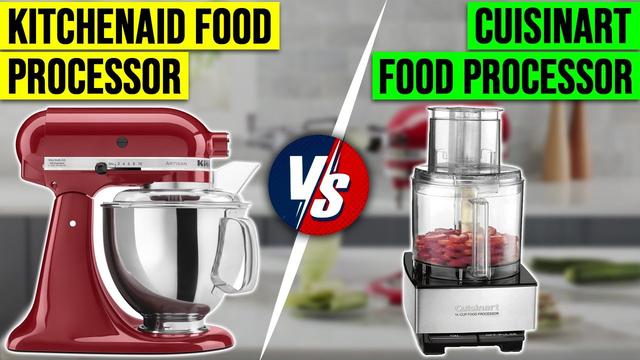
When comparing the features of the Cuisinart and Kitchenaid food processors, it is hard to discern which one comes out on top. Both models come with three chopping attachments: an S-shaped chopping blade, a versatile shredding disk, and a slicing disk. The Kitchenaid has three speeds (low, high, and pulse), while the Cuisinart only has on and pulse options. Additionally, the Cuisinart has a heavy-duty 600-watt motor compared to the Kitchenaid’s 300-watt motor.
In terms of capacity, both brands offer various sizes ranging from 3 cups to 14 cups. The 11-cup size is most popular as it can handle almost all kitchen projects. The Cuisinart is slightly slimmer than the Kitchenaid, making it more suitable for small kitchens. Both models feature dual-size feeding tubes for added convenience.
When it comes to build quality and price, both brands are comparable. They are made with high-grade stainless steel blades and have solid construction. The Cuisinart is made from ABS plastic while the Kitchenaid is made from Polycarbonate Plastic, which gives it more flexibility. However, the Kitchenaid features an UltraTight Seal mechanism that prevents overflow when filled to capacity.
Cuisinart Video
In this Cuisinart video, you can see the 13-cup food processor in action. Although it is a different model than the one we are reviewing here, it still provides a good representation of the features and capabilities of the Cuisinart food processors. The video showcases the three chopping attachments, including the S-shaped chopping blade for coarse chopping and dough making, as well as the versatile shredding disk and slicing disk. It also demonstrates the on and pulse speeds of the Cuisinart model. The video highlights the dual-size feeding tubes, which allow for both large and small ingredients to be processed. Overall, this video gives a comprehensive overview of what you can expect from a Cuisinart food processor.
Kitchenaid Video
The Kitchenaid food processor comes with a variety of features that make it a versatile and reliable option for any kitchen. With three chopping attachments made from stainless steel, including an S-shaped chopping blade, a versatile shredding disk, and a slicing disk, this food processor can handle all your chopping, grating, and slicing needs. It also has three speeds – low, high, and pulse – which gives you more control over your recipes.
In terms of capacity, the Kitchenaid offers various sizes ranging from 3-cup to 14-cup options. The 11-cup size is the most popular and can handle almost all kitchen projects. It also features a dual-size feeding tube that allows you to easily process both large and small ingredients. The Kitchenaid food processor runs at a moderate noise level and comes with an UltraTight Seal feature that prevents leaks when filled to capacity.
In terms of build quality, the Kitchenaid food processor is made from Polycarbonate Plastic which is flexible and less likely to break under stress. It also comes with a one-year warranty. Overall, the Kitchenaid food processor offers great features and build quality for its price.
Cuisinart or Kitchenaid Food Processor – Which Has Better Features?
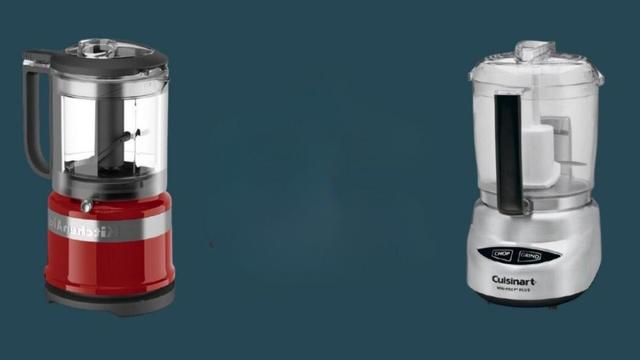
Cuisinart and Kitchenaid are both highly regarded brands when it comes to food processors, and they both offer a range of features that make them stand out. When comparing the features of these two food processors, it is difficult to discern which one comes out on top. Both models come with three chopping attachments: an S-shaped chopping blade, a versatile shredding disk, and a slicing disk. The Kitchenaid model has three speeds – low, high, and pulse – while the Cuisinart model only has on and pulse options. Additionally, the Cuisinart model has a heavy-duty 600-watt motor, making it better suited for heavy-duty chopping or dough mixing compared to the Kitchenaid’s 300-watt motor.
In terms of capacity, both brands offer various sizes ranging from 3-cup to 14-cup options. The 11-cup size is the most popular as it can handle almost all kitchen projects. The Cuisinart food processor is slightly slimmer than the Kitchenaid, which may be more suitable for smaller kitchens. Both models feature dual-size feeding tubes – a larger tube built into the lid for full-sized or large ingredients, and a smaller feeding tube insert for precision slicing or adding ingredients gradually.
While both models have excellent build quality with blades made from high-grade stainless steel, there are some differences worth noting. The Cuisinart model is made from ABS plastic while the Kitchenaid model is made from polycarbonate plastic. ABS plastic generally has higher strength while polycarbonate is more flexible and less likely to break under stress. This difference makes the Cuisinart model better suited for dough-making.
When it comes to price, both food processors are around $100 and regularly go on special offers, making them equal contenders in terms of value for money.
Overall, it is challenging to determine which brand has better features as they have many similarities. The choice between Cuisinart and Kitchenaid would depend on specific needs such as dough-making, kitchen size, professional use, and warranty options.
Chopping Attachments & Disks
Both the Cuisinart and Kitchenaid food processors come with three chopping attachments: an S-shaped chopping blade, a versatile shredding disk, and a slicing disk. The S-shaped blade is made from stainless steel and can be used for coarse chopping as well as dough mixing. The shredding disk is great for making coleslaw, salads, or prepping stir fry ingredients. The slicing disk is perfect for thin slicing of various ingredients like potatoes for potato chips.
The Kitchenaid food processor offers three speeds (low, high, and pulse) which provide more control over the end result of your dishes. On the other hand, the Cuisinart model only has on and pulse settings. However, the Cuisinart boasts a heavy-duty 600-watt motor compared to Kitchenaid’s 300-watt motor. This makes the Cuisinart better suited for heavy-duty chopping and dough mixing.
Blending Speeds & Power
Both the Cuisinart and Kitchenaid food processors come with different blending speeds. The Kitchenaid model offers three speeds – low, high, and pulse, giving you more control over your blending process. On the other hand, the Cuisinart model only has an on and pulse option. However, the Cuisinart food processor has a heavy-duty 600-watt motor, while the Kitchenaid only has a 300-watt motor. This means that if you need to do any heavy-duty chopping or mixing dough, the Cuisinart would be a better choice.
Both brands offer a range of sizes for their food processors, from 3-cup to 14-cup capacities. The most popular size is the 11-cup, which can handle most kitchen projects. However, if you are cooking for just two people or have limited space in your kitchen, then a smaller size like the 7-cup may be more appropriate. In terms of dimensions, the Cuisinart is slightly slimmer than the Kitchenaid.
When it comes to features, both food processors come with three chopping attachments – an S-shaped chopping blade made from stainless steel for coarse chopping and dough mixing, a versatile shredding disk for coleslaw or stir fry ingredients, and a slicing disk for thin slicing. Both models also have dual-size feeding tubes for larger or smaller ingredients. One notable feature of the Kitchenaid is its UltraTight Seal mechanism that prevents spills when filled to capacity.
Both the Cuisinart and Kitchenaid food processors have excellent build quality. All blades are made from high-grade stainless steel that won’t rust or become dull easily. The Cuisinart model is made from ABS plastic, which offers higher strength, while the Kitchenaid is made from Polycarbonate Plastic, which is more flexible and less likely to break under stress. Both models have a solid build quality overall.
Size
Both the Kitchenaid and Cuisinart food processors come in a variety of sizes to suit your needs. The most popular size is the 11-cup, which can handle almost all kitchen projects. However, both brands offer smaller and larger options as well.
The Kitchenaid food processor measures 15″ tall x 8.5″ wide (side to side) x 9.5″ wide (front to back), while the Cuisinart food processor is slightly slimmer at 13.8″ tall x 7″ wide (side to side) x 11.2″ wide (front to back). If you have limited counter space, the Cuisinart may be a better option.
Noise Level
The noise level of both the Cuisinart and Kitchenaid food processors is relatively low. While they are not completely silent, they do not produce as much noise as a typical blender. This means that you can still have a conversation in the kitchen while using either of these food processors without being disrupted by excessive noise. However, it is worth noting that some users have mentioned that the Cuisinart model runs slightly quieter than the Kitchenaid model. Overall, both food processors offer a quiet operation during use.
Seal
Both the Cuisinart and Kitchenaid food processors come with a sealing mechanism, but they differ in their effectiveness. The Kitchenaid model features an UltraTight Seal that ensures a leak-proof operation even when the blender is filled to capacity. This is especially useful for those who want to use the processor for larger recipes without worrying about making a mess. On the other hand, the Cuisinart lacks this feature and users need to be cautious not to fill it over halfway full to prevent any spills or leaks.
Overall, if you prioritize a stronger sealing mechanism and plan on using the food processor for larger quantities of ingredients, the Kitchenaid model would be the better choice. However, if you don’t mind being more careful with filling and prefer other aspects of the Cuisinart processor, this might not be a significant factor for you.
Price
Both the Kitchenaid and Cuisinart food processors are priced similarly, with both models hovering around $100. However, they often go on special, making them equal contenders for better value for money. It’s worth noting that the price may vary depending on the specific size and features of the model you choose.

What is the Kitchenaid or Cuisinart Food Processor Best Suited For?
The Kitchenaid and Cuisinart food processors are both versatile machines that can handle a wide range of tasks in the kitchen. They are best suited for chopping, grating, and slicing vegetables, making dips, salsas, pesto, and sauces. Both models are capable of handling these tasks with ease.
However, there are some differences in their abilities that may make one model more suitable for certain tasks. The Cuisinart food processor is better suited for mixing dough due to its higher wattage motor. It also has a better shredder attachment compared to the Kitchenaid, making it more effective at shredding thick ingredients like cheese.
If you’re planning on using the food processor in a commercial setting, such as a restaurant or catering service, the Cuisinart model may be a better choice. It comes with a three-year warranty and has a reputation for being durable and reliable.
Build Quality – Kitchenaid vs Cuisinart
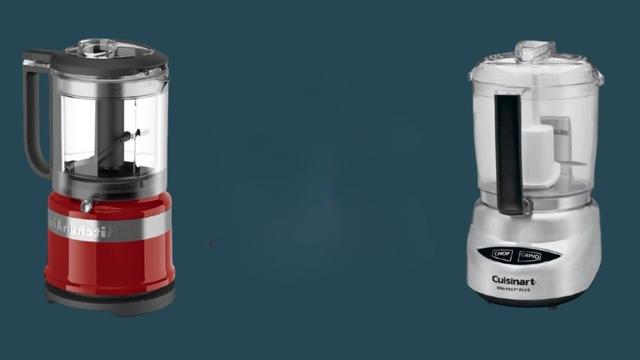
Both the Kitchenaid and Cuisinart food processors have excellent build quality. The blades in both models are made from high-grade stainless steel, ensuring durability and resistance to rust or dullness. The Cuisinart model is made from ABS plastic, which provides a higher strength and is well-suited for dough-making. On the other hand, the Kitchenaid is made from Polycarbonate Plastic, which offers flexibility and is less likely to break under stress.
One notable feature of the Kitchenaid food processor is its UltraTight Seal mechanism, which prevents overflow when filled to capacity. This can be particularly useful if you often work with larger quantities of ingredients. However, it’s important to note that neither model comes in a metal-base form, which could increase the overall price.
Quick Buyer’s Guide to the Kitchenaid vs Cuisinart Food Processor

When deciding between the Kitchenaid and Cuisinart food processors, there are a few key factors to consider. First, think about what you will be using the food processor for. Both models are great for chopping, grating, and slicing vegetables, as well as making dips, salsas, pesto, and sauces. However, if you plan on mixing dough or working with tougher ingredients, the Cuisinart may be better suited for those tasks due to its higher wattage.
Next, consider the size of your kitchen and your specific needs. Both brands offer a range of sizes from 3-cup to 14-cup capacity. The 11-cup size is popular and versatile for most kitchen projects. If space is limited in your kitchen, the slimmer design of the Cuisinart may be more practical.
If you anticipate using the food processor in a professional setting or for heavy-duty use, such as in a restaurant or catering service, the Cuisinart model may be preferable due to its three-year warranty compared to the Kitchenaid’s one-year warranty.
Which is the Better Food Processor – Kitchenaid or Cuisinart?
When it comes to determining which food processor is better – Kitchenaid or Cuisinart – it ultimately depends on your specific needs and preferences. Both brands offer high-quality and versatile food processors that can handle a variety of kitchen tasks.
In terms of features, both Kitchenaid and Cuisinart food processors come with three chopping attachments – an S-shaped chopping blade, a shredding disk, and a slicing disk. However, Kitchenaid offers three speeds (low, high, and pulse), providing more control over the blending process. On the other hand, Cuisinart has a heavy-duty 600-watt motor compared to Kitchenaid’s 300-watt motor, making it more suitable for heavy-duty chopping or dough mixing.
When it comes to capacity, both brands offer various sizes ranging from 3-cup to 14-cup options. The 11-cup size is the most popular as it can handle most kitchen projects. The Cuisinart model is slightly slimmer than the Kitchenaid, which may be beneficial for those with limited counter space.
In terms of build quality and price, both brands are known for their reliability and solid construction. The blades are made from high-grade stainless steel that is resistant to rusting or dulling. However, the Kitchenaid model features an UltraTight Seal mechanism that prevents overflowing when filled to capacity.
When considering what foods or ingredients each food processor is best suited for, both can easily handle chopping, grating, and slicing vegetables. They are also great for making dips, sauces, pesto, and salsas. The Cuisinart model is better suited for mixing dough due to its higher wattage.
If you plan on using the food processor in a commercial setting or require a longer warranty period, the Cuisinart model may be more suitable as it comes with a three-year warranty compared to Kitchenaid’s one-year warranty.
Ultimately, the decision between Kitchenaid and Cuisinart will depend on your specific needs, budget, and preferences. Both brands offer reliable and versatile food processors that can make your kitchen tasks easier.
In the battle of Cuisinart vs KitchenAid food processors, both brands offer high-quality and reliable options for your kitchen. Cuisinart excels in versatility and performance, while KitchenAid stands out with its durable build and stylish design. Ultimately, the choice between these two renowned brands will depend on your specific needs and preferences.
Learn More About Grilling
If you want to learn more about grilling, check out these other helpful resources!

